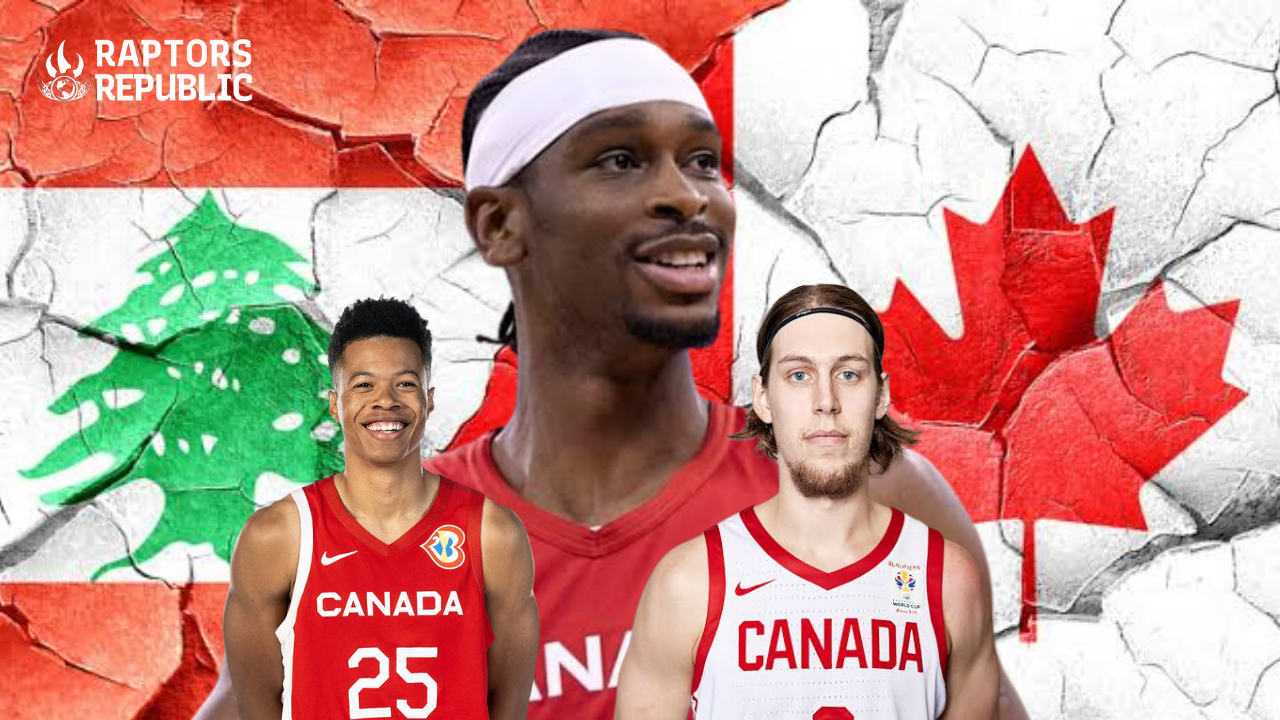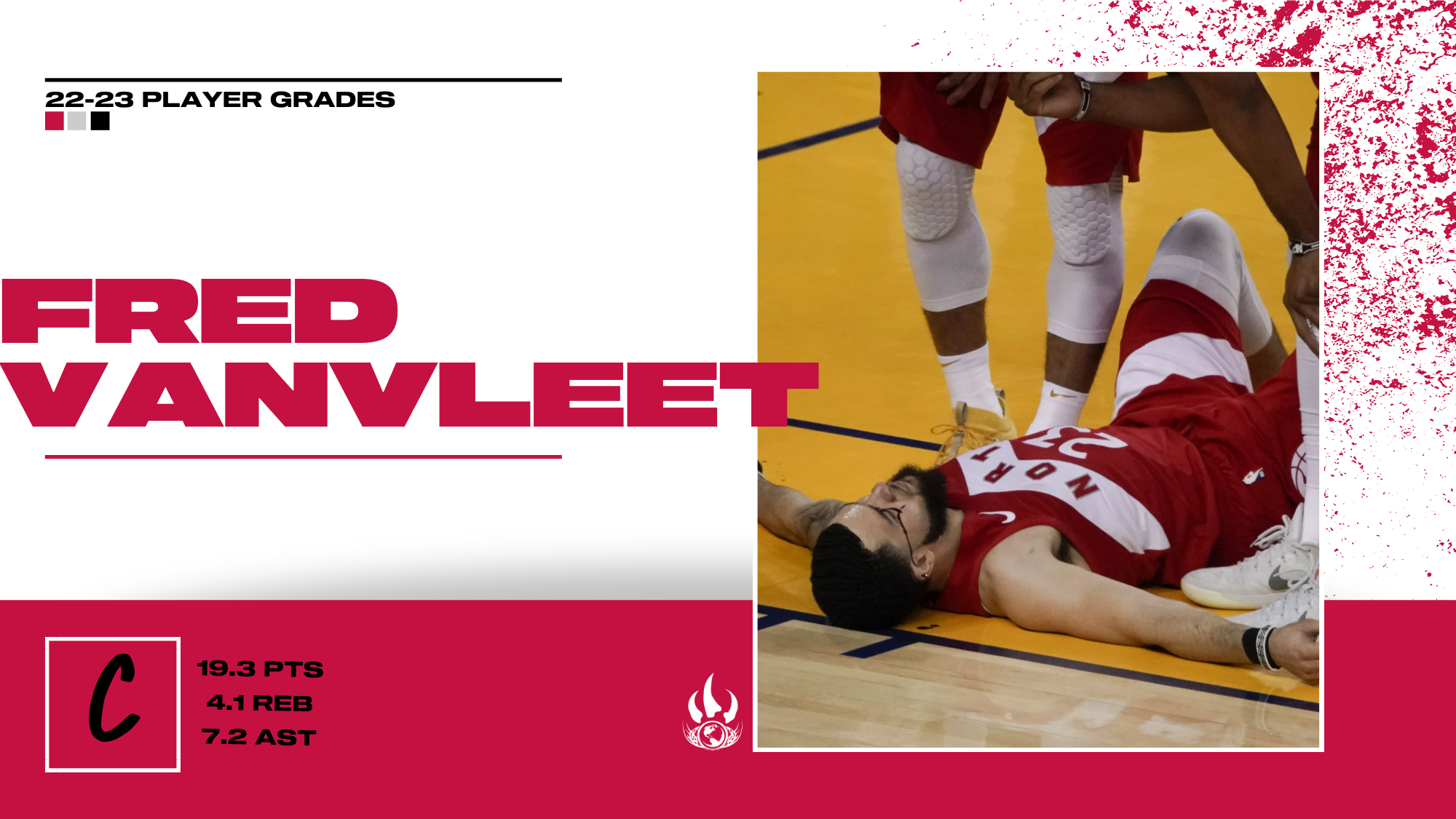With France’s shocking elimination from the 2023 World Cup, Canada and Latvia will represent Group H in the 2nd round. While both nations have qualified, the #1 seed in Group H is still at stake, with the winner of Canada vs Latvia claiming the top spot in the group. In addition and more importantly, the winner will also gain a leg-up in the 2nd Group Stage, with the result of tomorrow’s game carrying over. Essentially, Canada needs to approach this game as the beginning of the 2nd round. That’s how important it is.
Players to Watch
Arturs Zagars – 6’3″ PG (23 years old)
The lead ball handler for Latvia, the young Zagars is a dynamic offensive creator, especially out of the PnR. Zagars will have the ball in his hands a lot against Canada, and the crafty guard is capable of dominating a game, like he did against France.
MaceoBaller, a brilliant follow for international basketball prospects, wrote a player profile on Arturs Zagars, which you can find here. Highly recommend giving it a read to familiarize yourself with Latvia’s primary creator. The video below showcasing his PnR talent is from MaceoBaller’s piece!
Rolands Smits – 6’9″ PF (28 years old)
One of the few Latvians with EuroLeague experience (Smits played for Lithuanian powerhouse Zalgiris last season), Smits is the starting center and leading scorer for Latvia at the 2023 WC. Diving into his film, and Smits is truly a special offensive player. He’s got a beautiful shooting stroke (that seems to be a common denominator with this whole Latvian team, more on that later) and is really comfortable putting the ball down on the floor. Seems to be a matchup nightmare for the bigger, slower FIBA bigs.
Davis Bertans – 6’10” F (30 years old)
NBA fans need no introduction for the “Latvian Laser”. Truly elite movement shooter at 6’10”, Canada will need to play with focus and discipline both on-ball and off-ball with Bertans.
Dairis Bertans – 6’4″ G (33 years old)
The older brother of Davis Bertans and Captain of the Latvian squad, Dairis is another elite 3PT shooter who can get hot in an instant. Apparently his nickname is the “Latvian Rocket”, which fits perfectly.
Something to note, Dairis Bertans only logged 5:57 minutes of playing time against France. He seems to have suffered a hamstring injury, so he may be sidelined for this Group H clash. (Edit: it was announced on August 28th that Bertans would miss the remainder of the WC with the hamstring injury).
Defensive Key: Defend the 3PT Line
Latvia’s offense is centered around generating 3PT shots and hitting them at a high frequency. They will be, without a doubt, one of the better 3PT shooting teams Canada will face all tournament.
Interestingly, after diving into the numbers, Latvia’s 3PT profile during the WC Qualifiers and first 2 games of the WC grades out similarly to Canada in terms of volume and efficiency. That’s shocking considering shooting is one of the major concerns many, including myself, have with this edition of Canada’s SMNT.
I do think these numbers for Canada are slightly misleading and Latvia is comfortably the better 3PT shooting team. Both teams’ WC numbers are inflated by the games against Lebanon and some of Canada’s best shooters during the Qualifier Windows are not on the WC team or playing minor roles (Kassius Robertson, Phil Scrubb, Aaron Best, Kenny Cherry, Kyle Wiltjer).
| 3PM (Per Game) | 3PA (Per Game) | 3P% | % of FGA | PPG | |
| Latvia (WC Qualifiers, 12 games) | 11.2 | 29.8 | 37.5 | 48.8 | 81.8 |
| Latvia (WC, 2 games) | 16.0 | 35.0 | 45.7 | 53.0 | 98.5 |
| Canada (WC Qualifiers, 12 games) | 14.0 | 32.8 | 42.6 | 48.2 | 97.7 |
| Canada (WC, 2 games) | 14.5 | 33.0 | 43.9 | 46.2 | 111.5 |
All this to say, Canada’s defensive focus and cohesiveness will need to be incredibly sharp on Tuesday. Communication off-ball will need to be emphasized in order to contain and cover all of Latvia’s 3PT shooters. As well, defending PnR actions at a high level will be one of the deciding factors of the game. With Latvia’s shooting ability and lack of vertical roll threats, they usually have their bigs pop after setting the screen. With Canada’s default PnR coverage being drop thus far, we are vulnerable to this exact action. If Canada does play a heavy dose of drop, their rotations will have to be on time and well-organized. France’s rotations and recovery after playing drop were so poorly executed and was one of the reasons for their upset loss to Latvia.
As a result, this game feels like a big Dwight Powell one. His mobility and versatility to switch PnR’s could come in handy to blow up Latvia’s most lethal action, a Pick and Pop with Zagars and Smits. In addition, I could see Jordi Fernandez go with an adjustment he already tried in the 2nd exhibition game against Germany. Switch Brooks and Olynyk’s defensive assignments (Olynyk guards a wing, Brooks slides up to guard the big) so Brooks/Powell are defending every PnR, allowing Canada to switch everything.
Another tactic from Jordi Fernandez could be going to a super small lineup (SGA, NAW, Dort, Brooks, Barrett, perhaps Ejim at the 5 for more size) in closing stretches of the game like he did vs Germany. This adjustment takes Olynyk out of the game (which is bad), so it definitely feels like one of those offense-defense substitution lineups that coaches go to all the time late in games. Still, I think it’s an option worth considering in specific situations.
Latvia’s offense will pose a different, but still challenging problem for Jordi Fernandez’s defense to solve. We will see if Canada can continue to live up to its lofty goal of being the “best defense in the tournament“.
Offensive Key: Attack The Interior
While France posed a threat on the interior for Canada with their sheer size advantage, Latvia, without Kristaps Porzingis, is the opposite. Latvia’s 3 tallest players either play very little minutes (Anžejs Pasečņiks – 7’2″ & 6.9 MPG, Klavs Cavars – 6’10 & 6.6 MPG) or are poor interior defenders Davis Bertans (6’10”, 20.3 MPG). Shai Gilgeous-Alexander, RJ Barrett and really any Canadian guard/wing should be able to get paint touches and generate highly efficient looks all game.
One interesting thing to note is Latvia did play a “box-and-1” against Evan Fournier. France’s offense was totally out of sync against this coverage, and if Latvia bring out this defense against Shai, Canada’s secondary creators need to be much better prepared to attack off the catch.
| REB | OREB | BLK | |
| Latvia (WC) | 29.5 | 10.5 | 1.5 |
| Canada | 40.5 | 13.5 | 1.5 |
Another aspect of Latvia’s smaller frontcourt is the rebounding battle. Canada’s gameplan to gang rebound and outnumber France’s bigs on the defensive glass worked to great success as Canada actually outrebounded the much bigger French team. That won’t be as necessary this time around as Latvia is a much poorer rebounding team (ranked 29th out of 32 teams at the 2023 WC). Instead, I think Canada can really put some pressure on Latvia’s frontcourt by attacking the offensive glass, creating extra possessions for themselves.
Bonus Key: Wreck Havoc on the Perimeter
As it currently stands, Latvia averages just 9.0 TOV per game, the lowest mark in the tournament so far. If we go back to the WC Qualifiers, their 12.2 TOV per game ranked 8th. They take care of the ball extremely well for such a high octane offense.
Conversely, Canada’s length, activity and elite POA defense have created 11.0 STL per game, good for 5th at the 2023 World Cup. As I talked about in my latest episode of the We CAN Ball podcast, Canada (especially Shai) were so much more effective on offense when they attacked in transition/semi-transition. Creating more turnovers will only feed into more run outs where Canada can tack on points in a hurry, like we saw in the 3rd Q vs France. Dillon Brooks, Lu Dort, NAW and SGA are going to be pivotal at the POA.



